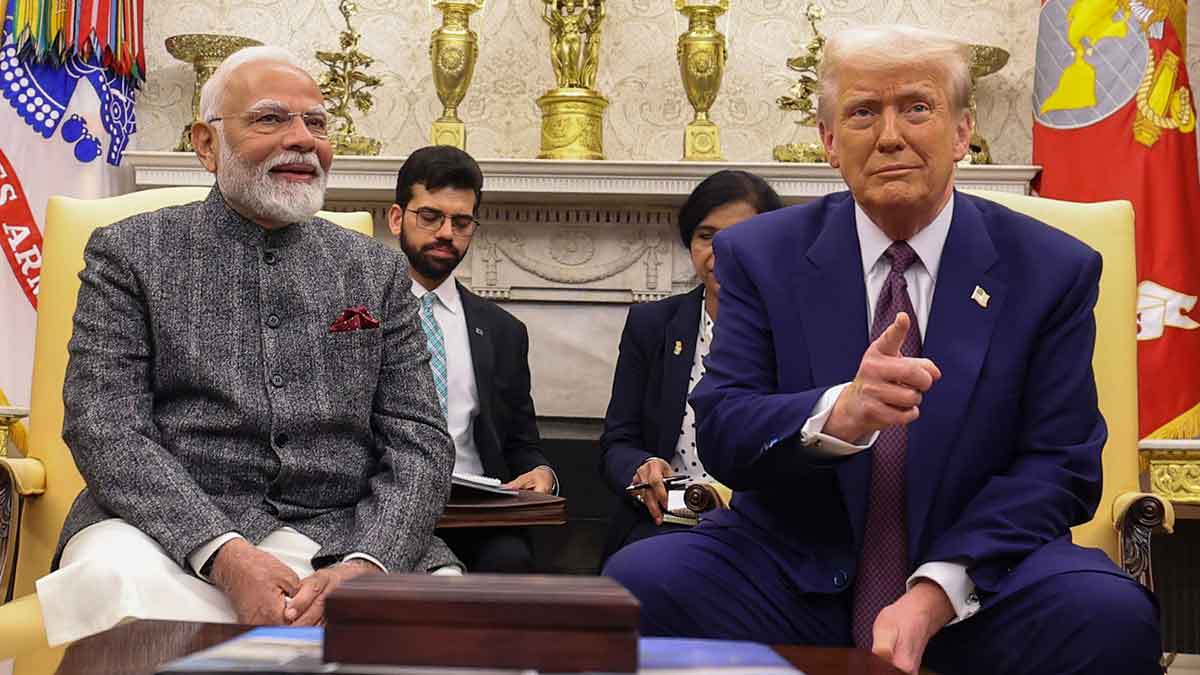Why US trade deals with Japan and Indonesia are a blow to India
 Uneasy alliance: Prime Minister Narendra Modi during a meeting with US President Donald Trump at the White House, in Washington, in February | PTI
Uneasy alliance: Prime Minister Narendra Modi during a meeting with US President Donald Trump at the White House, in Washington, in February | PTI
From ‘first in line’ to ‘still in line’, India’s destiny at the trade negotiating table hangs by a thread. It wouldn’t be an exaggeration to say that it is now dependent on the infamous vagary of Donald Trump’s mood.
When Trump celebrated another trade deal with Japan earlier this week, another agreement almost went under the radar. America’s striking a trade deal with Indonesia. And together, they pose two serious threats to Modi’s already tenuous hopes of bagging a table hug in Washington.
Initially, when Trump announced the ‘Liberation Day’ tariffs on April 2, India’s rate of a total 26 per cent seemed not too bad — especially when compared with its main contenders in the trade and economy space. China got slapped up to even 145 per cent duties, while many countries who could be considered India’s rivals in the export manufacturing as well as trading scene got higher tariffs. For example, Vietnam got a 46 per cent tariff on imports. This was good, many Indian industry analysts thought, as this would make Indian imports more competitive, while making India a more attractive destination for global biggies looking at offshore manufacturing.
But then, once Trump started playing his own version of snakes and ladders, India’s advantage seemed to shrink by the day. First off the block was China, which struck an interim truce, followed recently by Vietnam which managed to bring the rates down to 20 per cent.
And now, even as India’s negotiations remain stuck over its reluctance to open up to agriculture imports from the US, Washington has struck two more deals — one with Japan, and another with Indonesia.
Why these are significant and a possible body blow for India’s stance is because of two distinctly different reasons.
First Japan, which agreed to open up its markets to most US products including, now get this, rice. In Japan, too, rice is a politically sensitive subject. It is a staple, with the nation taking pride in its high quality paddy and the many dishes crafted using it as a base. Despite the heavyweight nature, the Japanese government agreed to give tariff-free access to US farm products, besides committing to invest 550 billion dollars in the US.
The question obviously will now haunt Indian negotiators at the next round of trade talks (which, by the way, is only after Trump’s new deadline of August 1, meaning Indian exports could just face higher duties right from next week, unless Trump does another volte face) — ‘if even Japan can open up for American agri, what is India’s issue?’, will go the narrative.
Similarly, Indonesia’s deal also reduces American tariffs on exports from that country to America from 40 per cent to 19 per cent. With Vietnam and Indonesia the front-running rivals to India in bagging global manufacturing, particularly those moving out of China, this means that for India to remain competitive and attract manufacturing from all over, it now has to get a tariff rate of at least 15 to 19 per cent. Not playing ball to protect the farmer voter base now comes with staggering repercussions for the entire economy.
Business